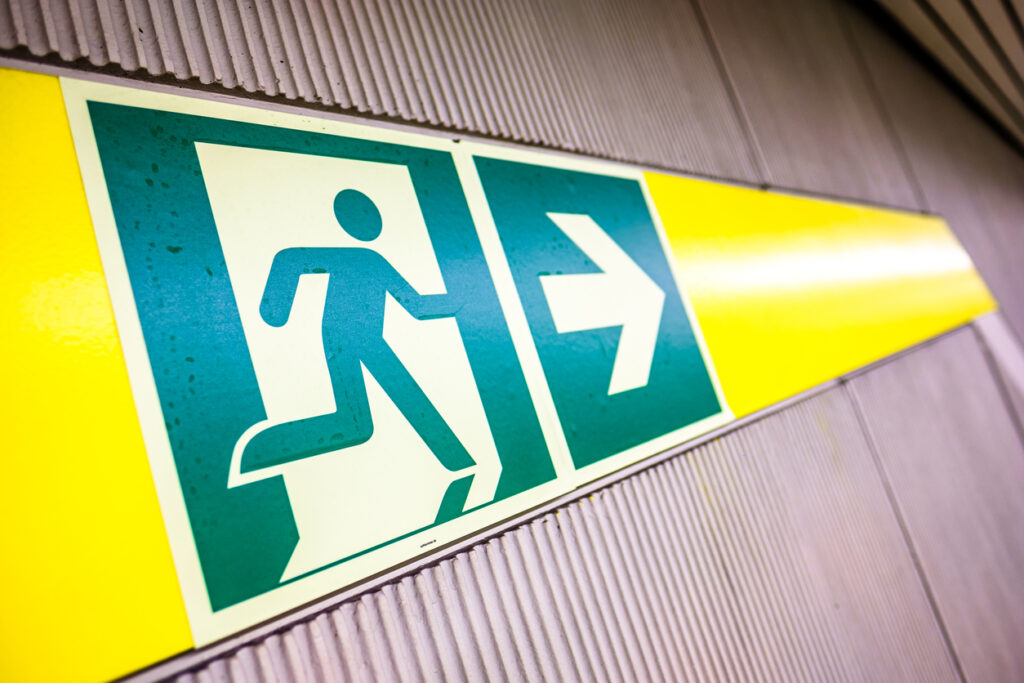Fire doors are an essential part of a property’s passive fire protection system. These doors keep escape routes clear from fire, giving occupants longer to escape and fire crews easier access. They also protect the remainder of the building, as well as nearby structures. Given their importance, regular inspections are vital and, as you’d expect, legally required. With recent changes, it can be unclear as to who’s responsible for these checks, how often works should be carried out, and what inspections include.
With this in mind, we’ve created this blog to discuss all aspects of fire door inspections and what you need to do. Read on to find out more about your legal requirements and how these vary depending on your property type.
What Are the Legal Obligations?
Article 17 of the Regulatory Reform (Fire Safety) Order 2005 (FSO) makes it a legal requirement to ensure that fire-resisting doors and escape doors are correctly installed and adequately maintained for them to be fit for purpose.
The Regulatory Reform (Fire Safety) Order 2005, often referred to as the FSO, applies to all buildings other than domestic housing and replaces 118 pieces of previous fire legislation, including the old fire certificate. The law now shifts responsibility from the fire authorities for fire safety to whoever has day-to-day control of premises. This puts a greater onus on building owners, and it’s vital that legislation is adhered to.

What Do Fire Door Inspections Include?
Checking fire doors is a multi-step process. All aspects of the door and its surroundings must be checked to ensure safety, but, unlike smoke alarms and electrical installations, no strict rules are set in place. However, there is guidance to follow. We’ve compiled a brief list below, while we’ve also written a more detailed article of 2024’s fire door checks.
When inspecting fire doors, the key parts to check are:
- Mechanisms and Hinges
- Smoke Seals
- Door and Frame
- Signage
- Appropriate Use
By checking the physical parts of each fire door, as well as the surroundings, consultants ensure that they’re fit for purpose and as effective as possible.
Who Can Inspect Fire Doors?
As detailed in the aforementioned Regulatory Reform (Fire Safety) Order 2005, work should be carried out by a “competent person”. With responsibility for these checks now falling to the building owner, the onus is on them to identify, appoint, and manage this person. There are stipulations for this person, as they should be approved and qualified for the assessment, typically with The Fire Door Inspection Scheme (FDIS) accreditation from the British Woodworking Federation.
This accredited person should carry out checks regularly throughout the year, and this is detailed in the section below. Our energy consultants are perfectly placed to offer this service, with years of experience in promoting safety within commercial spaces.
How Often Are Inspections?
At a minimum, fire doors should be inspected every six months. However, some factors can affect this, including newly installed doors and newly occupied buildings. When a new door is installed, monthly checks should be carried out. These more regular checks are important as the door settles into place, as issues can occur more quickly during this initial period.
Similarly, if a building has recently opened, doors should be checked more frequently, too. The increased wear and tear on these doors means that issues can arise unexpectedly, and regular checking keeps risk levels low. January 2023 also introduced new regulations for multi-occupied buildings over 11m tall. These buildings should be checked on a quarterly basis, rather than twice a year.

Should Inspections Be Recorded?
Yes, records of inspections should be kept, as well as any maintenance that has been carried out. This is essentially your audit trail, should you ever need to justify the safety of your business. It can also act as protection should a fire door fail despite your best intentions. Once captured, these records should be stored in the same way as EPCs and other legally required checks.
Why Are These Inspections Important?
In 2017, a fire at Grenfell Tower claimed the lives of 70 people. In response to the post-incident reports, the government increased safety efforts in multi-occupancy residential buildings. Feedback suggested that the fire doors in Grenfell Tower didn’t perform as expected, due to generally poor maintenance and inspections – as well as a lack of self-closers on many entrance doors of the building. So, in the aftermath, these areas received particular focus.
The Fire Door Inspection Scheme has also provided an insight into the safety of these buildings, and the results are shocking. In their research, 76% of fire doors were deemed not fit for purpose, while almost a third of doors were poorly installed.
How Can Clifton Energy Help?
At Clifton Energy, our certified assessors are on hand to provide effective fire door inspections. We meticulously evaluate the structural integrity of your fire doors, offering practical recommendations to enhance safety and compliance.
Trust Clifton Energy for your fire door inspections in Surrey, Croydon, and London and ensure your property’s and its occupants’ safety, all while staying fully aligned with relevant regulations. Whether you need a fire door installation or a free quote on an inspection for all your fire doors on the premises, get in touch today!